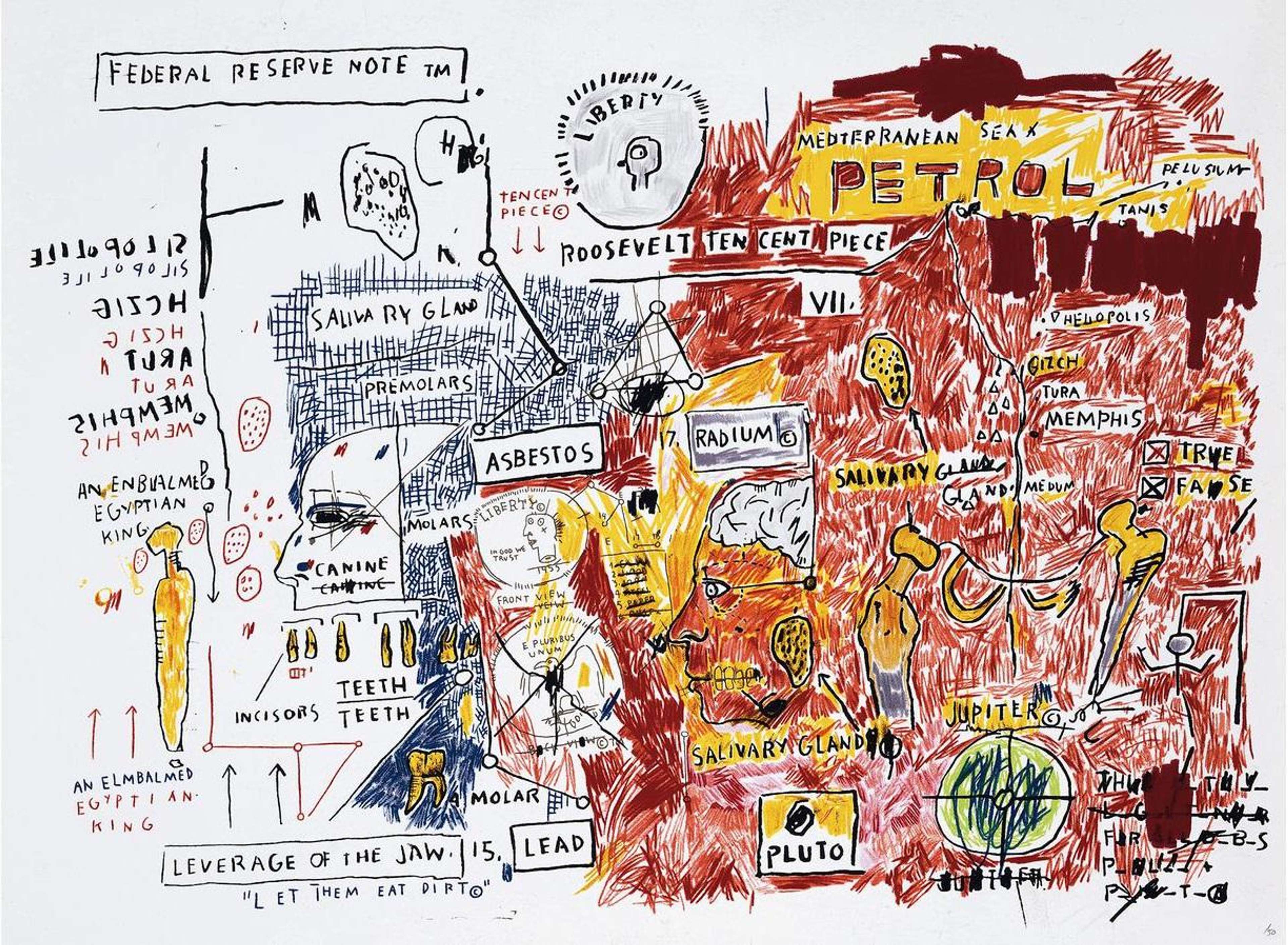
Liberty

Liberty
Unsigned Print
Jean-Michel Basquiat
£19,000-£29,000
$40,000-$60,000 Value Indicator
$35,000-$50,000 Value Indicator
¥180,000-¥270,000 Value Indicator
€22,000-€35,000 Value Indicator
$200,000-$300,000 Value Indicator
¥3,950,000-¥6,020,000 Value Indicator
$25,000-$40,000 Value Indicator
There aren't enough data points on this work for a comprehensive result. Please speak to a specialist by making an enquiry.
56 x 76cm, Edition of 50, Screenprint
Auction Results

Track auction value trend
Meaning & Analysis
This 2017 screenprint is a reproduction of Jean-Michel Basquiat’s 1983 painting Liberty from the Daros Suite series. The work is typical of Basquiat’s spontaneous visual approach throughout the 1980s, while nodding to socio-political issues through his considered choice of text and image. This print reproduces one of Basquiat’s most celebrated Neo-Expressionist works of the 1980s.
Typical of Basquiat’s graffiti-inspired style throughout the 1980s, Liberty is one of his most visually compelling works of the decade. The work is essentially split into two halves, with small drawings and annotations to the left of the composition that gradually merge into the chaotic red on the right. The work makes frequent references to the word ‘Liberty’, and even references ex-president of the United States Franklin D. Roosevelt in the small strip at the centre of the work. The broken nature of the work alludes not only to the fragmentation of the individual, but perhaps also of the deep-set socio-political divisions in 1980s America.
Throughout the work, Basquiat reveals his fascination with anatomy. Two sketches of the human head appear in the composition with scientific annotations. To the far right of the work, a loosely articulated hip bone and femur appear above a gun’s view-finder and next to a hanging stick-figure. As your eye is drawn from left to right, the work therefore becomes increasingly violent and traumatic, making a mockery of the title Liberty. Like many of Basquiat’s works from this era, the chaotic composition is open to the viewer’s interpretation but scrutinises the fragmentation of society at large.